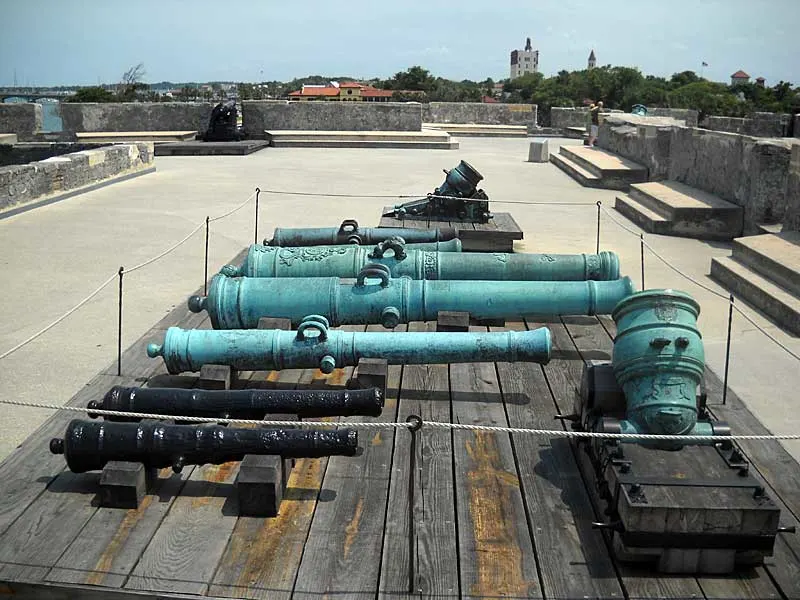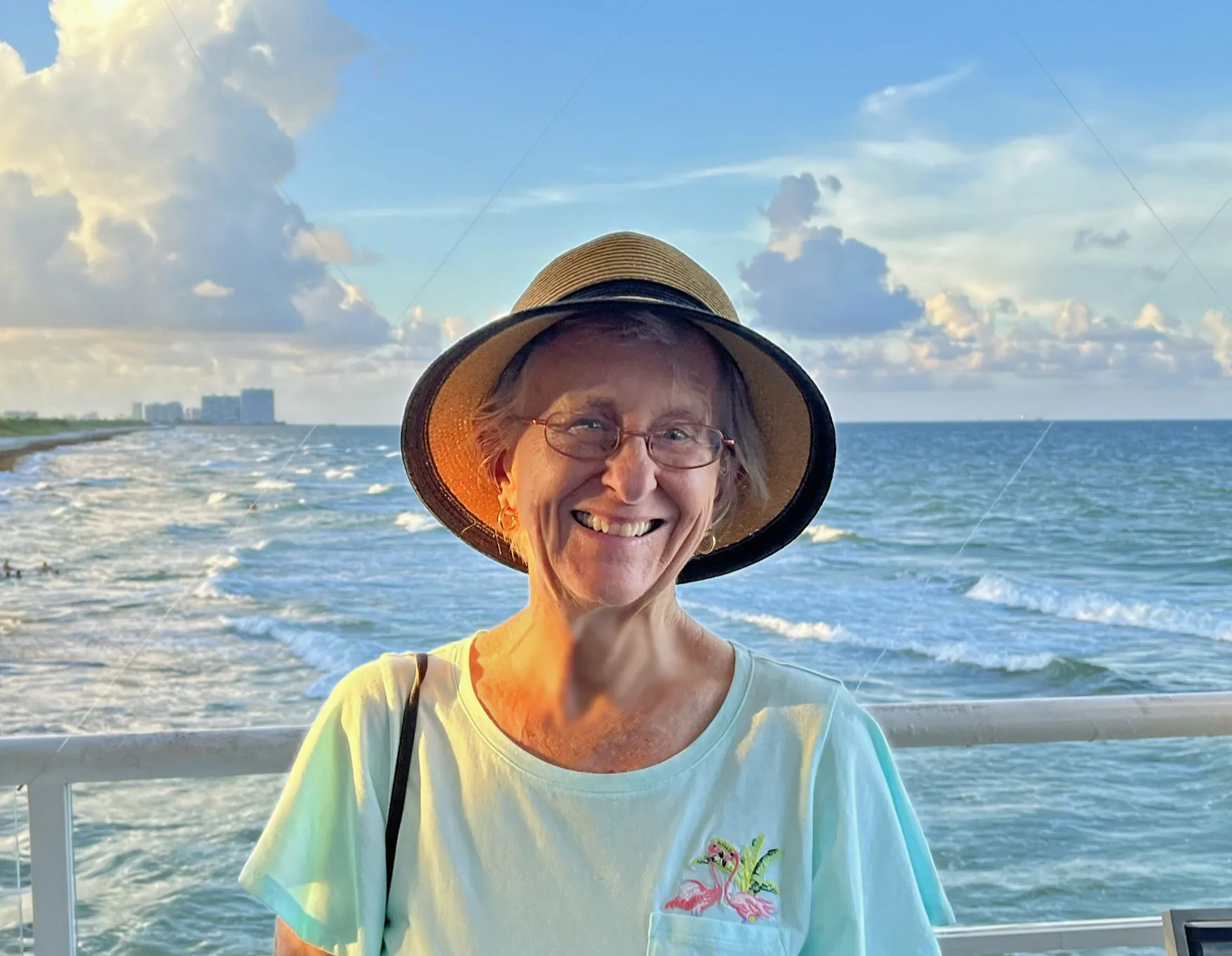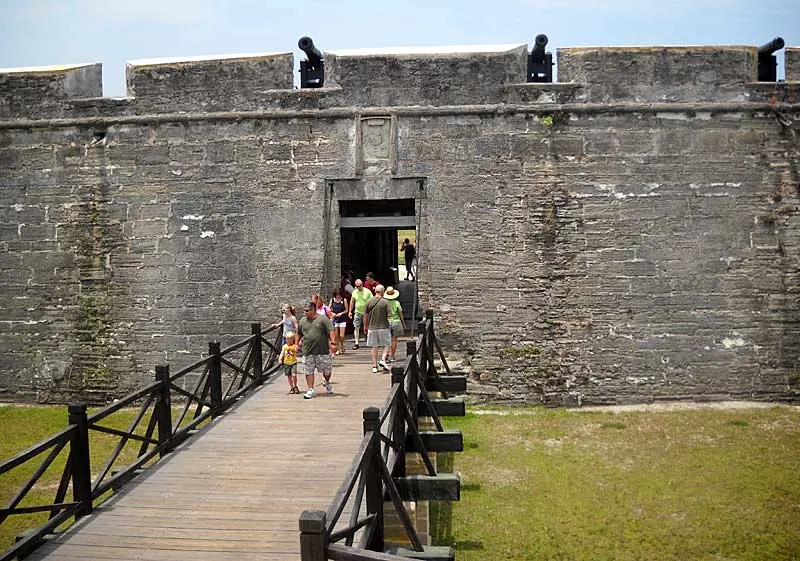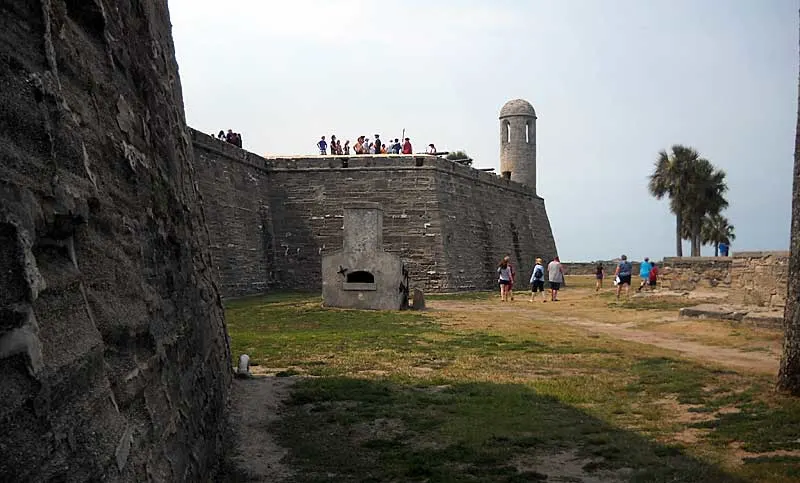The Spanish fort, Castillo de San Marcos, is the star of St. Augustine
The St. Augustine fort, Castillo de San Marcos, is a winner in so many categories — it has fascinating, history, it offers spectacular views and when the rangers fire the cannons (on weekends), it’s dramatic and entertaining.
It is the oldest masonry fort in the United States, built from 1672 to 1695, a hundred years after St. Augustine was founded by the Spanish.
It’s located right next to the walkable Old Town area and it has adjacent parking.

Tips for your visiting the St. Augustine fort
Volunteers and rangers in accurate period guard demonstrate how to fire a cannon at 10:30 a.m., 11:30 a.m., 1:30 p.m., 2:30 p.m. and 3:30 p.m. on Fridays, Saturdays and Sundays. This is a highlight of many visits and if you’re visiting the area, it’s a good idea to try to arrange your visit to take advantage of it. Check the National Park Service website for latest updates or programs.
Be sure to read up on the fort, which has a website with lots of information.

When to visit the St. Augustine fort
The Castillo de San Marcos is open to the public from 8:45 a.m. to 5:15 p.m. every day of the year except Dec. 25. (The ticket booth closes at 4:45 pm.) The park grounds are closed from midnight until 5:30 a.m.
Castillo de San Marcos is open 7 days per week. There is a maximum capacity of 350 visitors in the historic fort at any time is in effect.
Visitation is lowest from the middle of September through late November.
Visitation is highest June through Labor Day, and quite high on summer and holiday weekends when an average of 3,500 people visit the Castillo daily. During the summer, the Castillo de San Marcos extends its hours of operation to stay open one hour later, until 6:15 p.m.
School group visitation is quite high February through May. High visitation can also be expected during the December holidays, and March through April.
Admission is $15 adults; children 15 and under are free. Details on park website.
Exterior walls of the St. Augustine Fort. (Photo: Bonnie Gross)
Common questions about the St. Augustine fort
What is the St. Augustine fort made of? Coquina, which is actually a rock made out of seashells! Coquina is formed when the tiny clam donax variabilis dies. These are the small pink, lavender, yellow, or white shells you see along the Florida coastline at the waterline. These shells accumulated in layers over centuries, forming a rock. It is found in very few places in the world. Here, from the National Park Service, is the fascinating story of coquina and the construction of the St. Augustine fort.
Where do I park at the St. Augustine fort? A city parking lot is located in front of the Castillo de San Marcos and costs is $2.50 per hour. The pay station accepts credit and debit cards.
What year was the St. Augustine fort built? Construction began in 1672, 107 years after the city’s founding. The core of the current fortress — it was modified over the years — was completed in 1695
Other highlights of St. Augustine
- Old Town, best explored on foot. Get a free walking tour map of Old Town at the visitor information center, 10 S. Castillo Dr., across the street from the fort. Or, you can download and print it here.
- St. Augustine Pirate Museum: Fun for history lovers and kids
- The 120-year-old St. Augustine Alligator Farm has one of the best bird rookeries in the state for viewing and photographing birds in spring and early summer. Year-roun, the gators and crocs are fun to see too.
- Anastasia State Park is a coastal treasure for camping and its beaches. It has an archaeological site where coquina was quarried to build the St. Augustine Fort. Anastasia State Park is located off A1A, 1.6 miles south of the Castillo.
- Colonial Spanish Quarter Museum: A living history museum recreating the life in St. Augustine in 1740. Costumed interpreters bring life the St. Augustine that was an outpost of the Spanish Empire. The Colonial Spanish Quarter Museum is only a five minute walk from the entrance of the Castillo.
- St. Augustine Lighthouse and Museum: The 1874 lighthouse is the second highest lighthouse in Florida.
The St. Augustine Lighthouse & Museum is located 1.5 miles south of the Castillo just off route A1A.
Things to do near St. Augustine
- Fort Matanzas, 14 miles south, is a smaller Spanish fort built 50 years after the Castillo de San Marcos. It’s a great stop because you take a small boat to the fort past spectacular scenery. And it’s free.
- Princess Place Preserve, a nearby county park with an 1888 hunting lodge once owned by a princess. Good hiking and camping. Free.
- Washington Oaks Gardens State Park: Historic gardens plus unusual, beautiful coquina-rock beach.
- Flagler Beach, an Old Florida beach town.
- Faver-Dykes State Park for paddling and camping
- Fort Mose Historic State Park: The site of the first legally sanctioned free African settlement in United States. Fort Mose State Park is three miles north of the Castillo just off US-1.

The author, Bonnie Gross, travels with her husband David Blasco, discovering off-the-beaten path places to hike, kayak, bike, swim and explore. Florida Rambler was founded in 2010 by Bonnie and fellow journalist Bob Rountree, two long-time Florida residents who have spent decades exploring the Florida outdoors. Their articles have been published in the Sun Sentinel, the Miami Herald, the Orlando Sentinel, The Guardian and Visit Florida.



Julia Falkner
Monday 25th of October 2021
Fort Marion "Castillo de San Marcos", has a lot of Native American history tied to Indians in the vicinity. A sad history not told, they were brought up to the Fort, pictures and records were taking and later killed right on the back walls of the Marion Fort.
HENRY M PLISKE
Thursday 1st of October 2020
Born in Miami, I have probably been to the fort at least 20 times, from barely being able to remember to taking grandchildren. Never cease to be amazed. Ya gotta go see it.